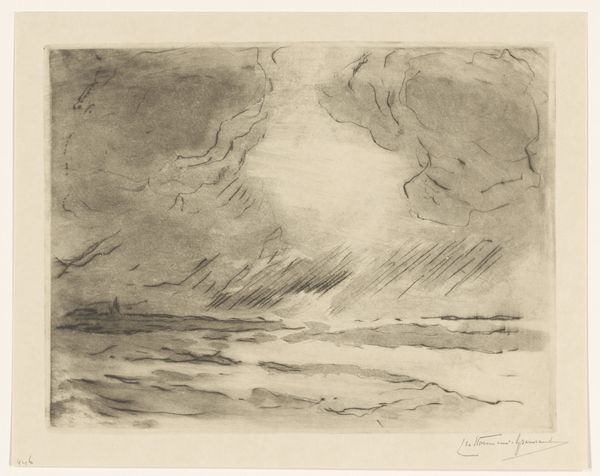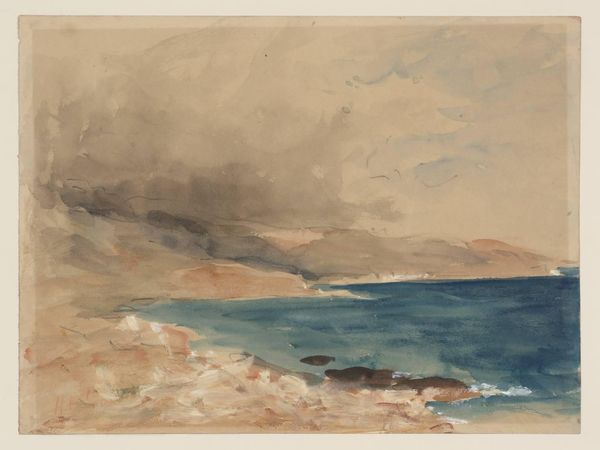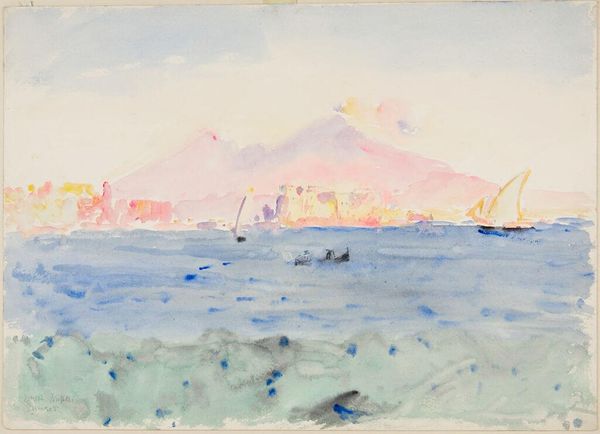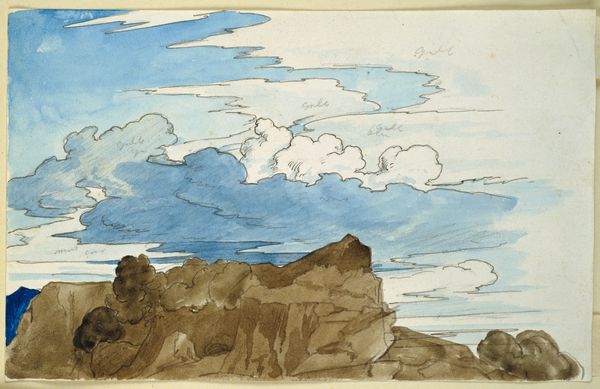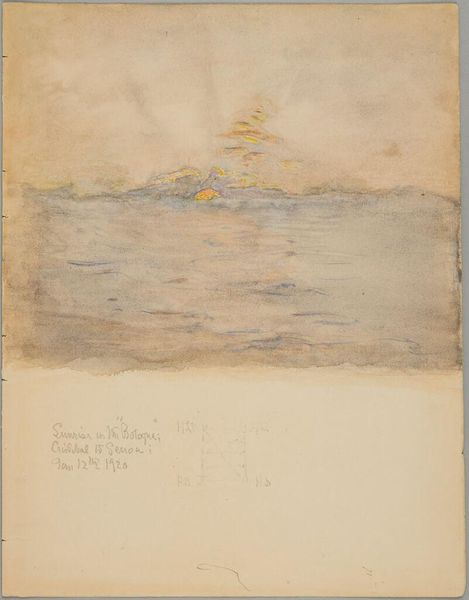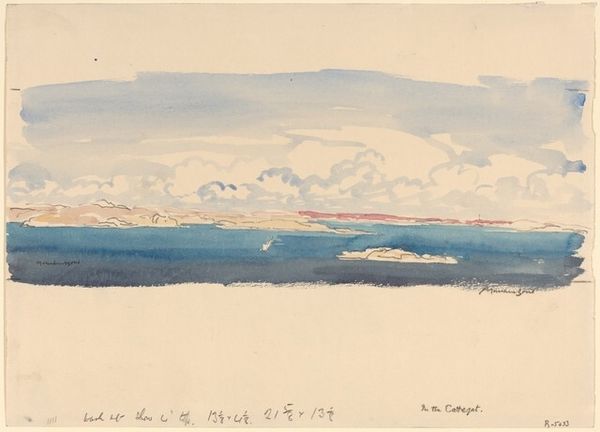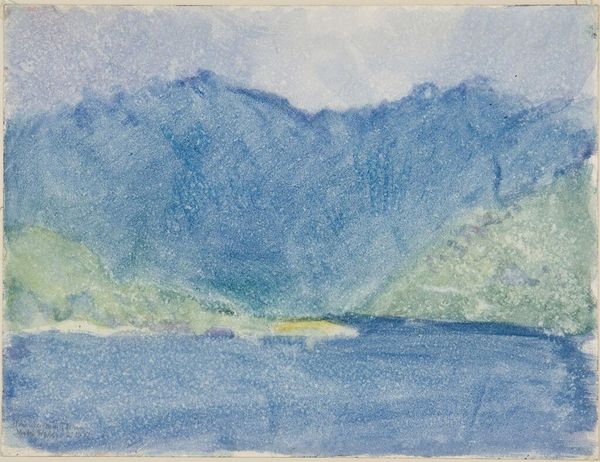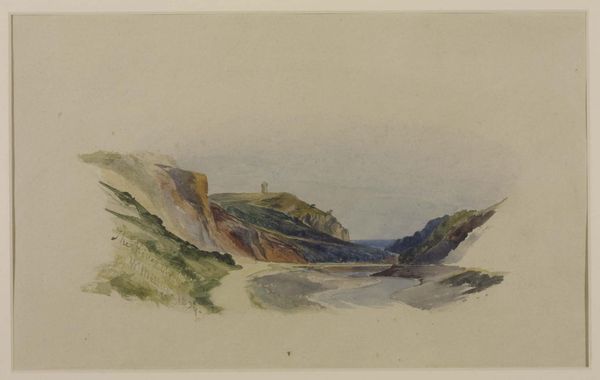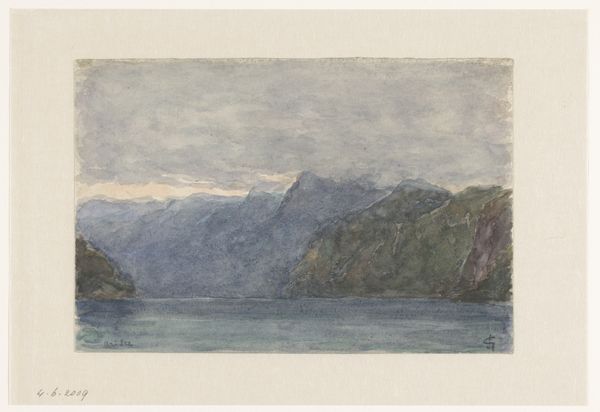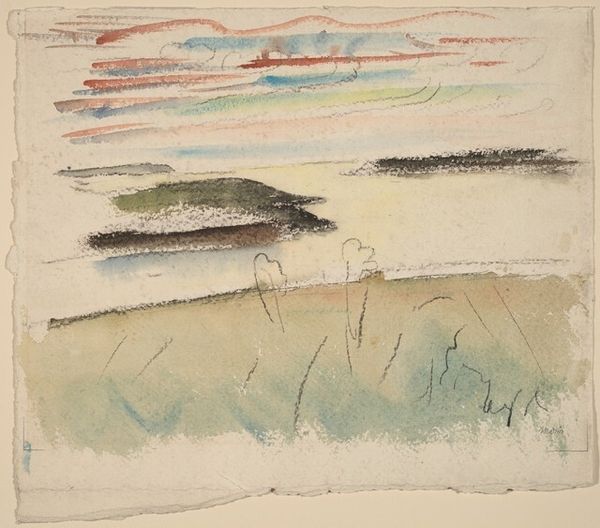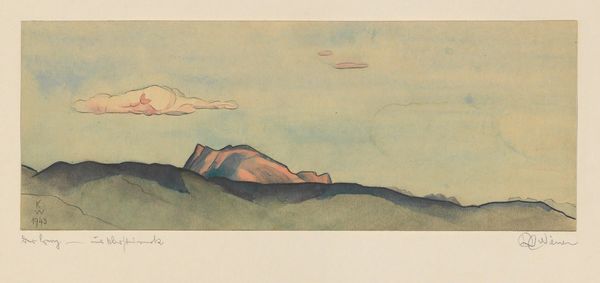
drawing, watercolor
#
drawing
#
ink painting
#
landscape
#
watercolor
#
abstraction
#
modernism
Dimensions: Overall: 13 x 23.6 cm (5 1/8 x 9 5/16 in.) support: 15.6 x 25.5 cm (6 1/8 x 10 1/16 in.)
Copyright: National Gallery of Art: CC0 1.0
Curator: John Marin’s 1940 watercolor and ink drawing, titled “Sea and Rocks, Maine,” presents an abstracted vision of a coastal landscape. Editor: My first impression is one of airy spaciousness, almost minimalist. The muted palette creates a dreamlike quality; the horizon line barely there. Curator: The composition is intriguing. The layering of transparent watercolor washes imbues a sense of depth, while the stark black ink lines boldly delineate the forms, simplifying the natural world into near geometric shapes. Consider the rhythmic arrangement of peaks and the linear patterns indicating the ocean's surface. Editor: It feels distinctly modernist, particularly in its reductive representation. You know, I'm drawn to how it eschews detailed realism in favor of conveying an emotional essence, that sparseness lends itself to feelings of isolation maybe tied to wartime anxiety, as Maine saw increases in its Naval defenses and wartime production during this era. Curator: Absolutely, Marin’s choice of media also supports that feeling. The fluid and translucent nature of watercolor perfectly suits the ephemeral nature of light and water. It's interesting how he marries the immediacy of drawing with the delicate, atmospheric qualities of watercolor technique. Look closely how his process reinforces dynamism; it suggests movement not only across the surface of the image but also an environmental vitality and openness that the natural harbors of Maine must have had. Editor: This invites further historical investigation into Marin’s perception of the place, too. Considering how representations of American landscapes during this era participated in identity building at the intersection of cultural production, ecology, and nationalism, understanding how Marin negotiated these representations in Maine provides insight into his contribution to Modernism’s role in shaping the meaning of American landscapes at the time. Curator: Yes, and even considering his treatment of forms gives one a more tangible feel for place, a distillation of something more real and personal. It highlights Marin’s unique artistic vision and method. Editor: True, reflecting on Marin’s process is rewarding. His stylistic abstraction captures how identity meets with place and is something to hold on to for further interpretations on your next encounter with similar coastal scenes in modernist painting.
Comments
No comments
Be the first to comment and join the conversation on the ultimate creative platform.

